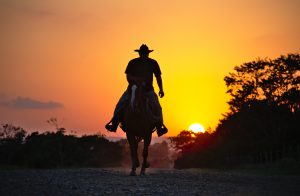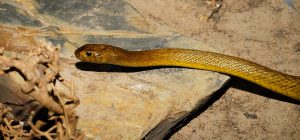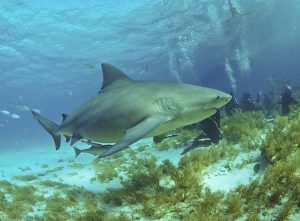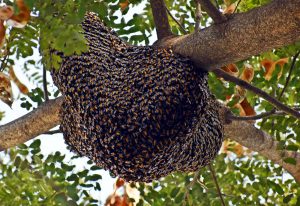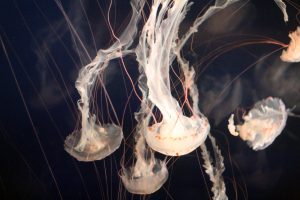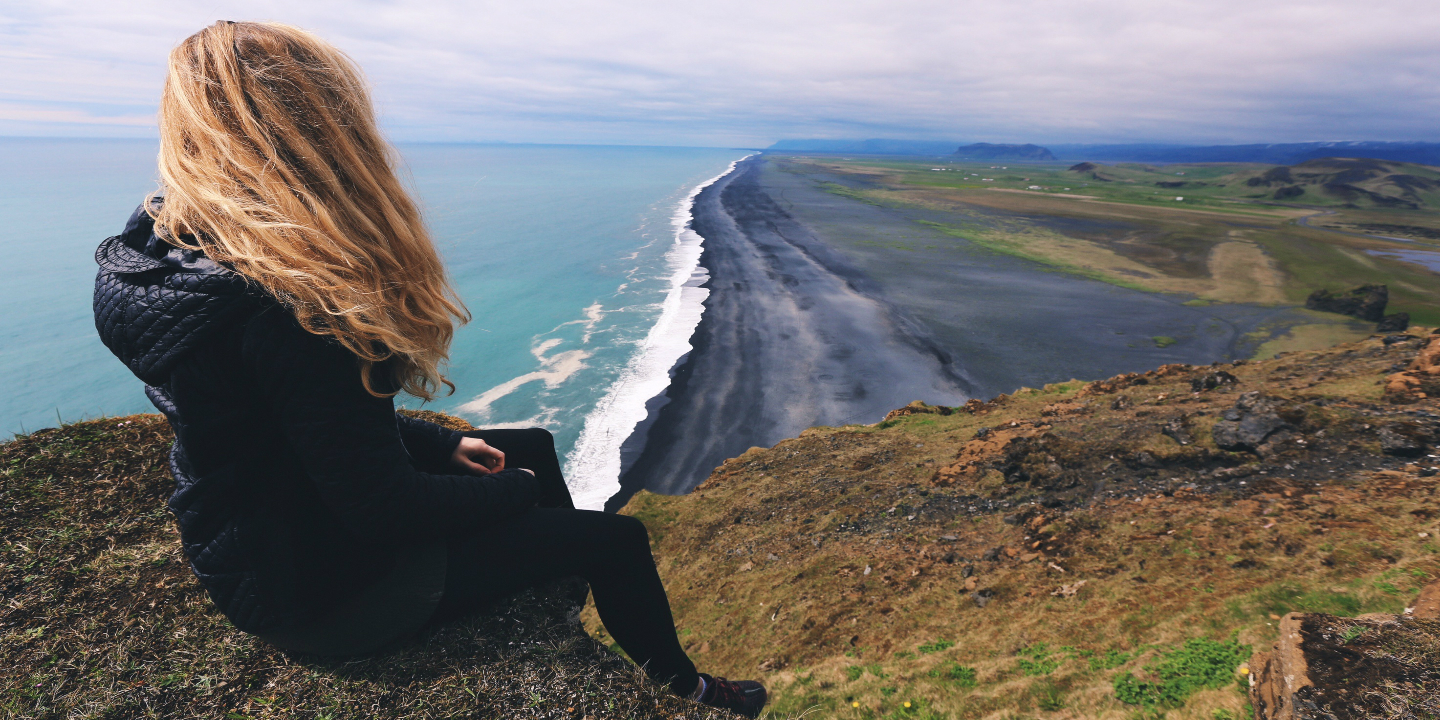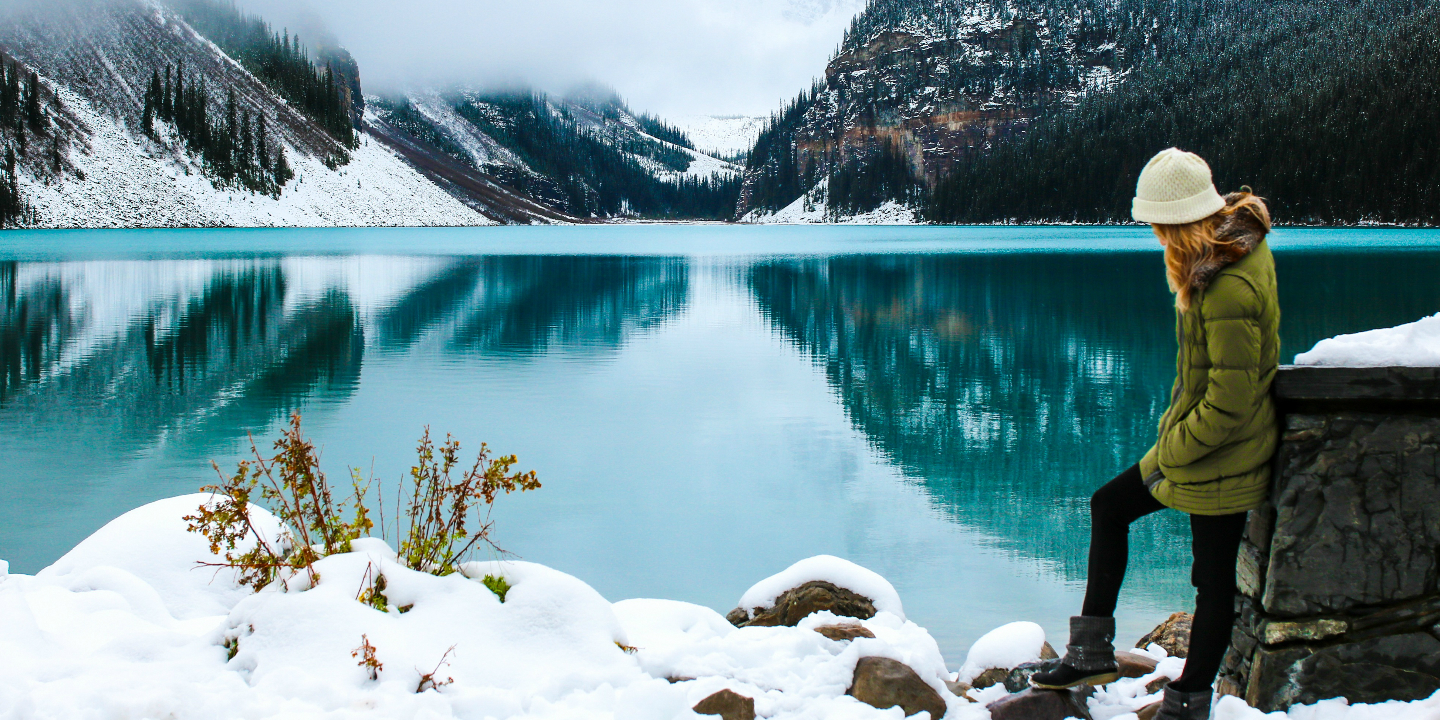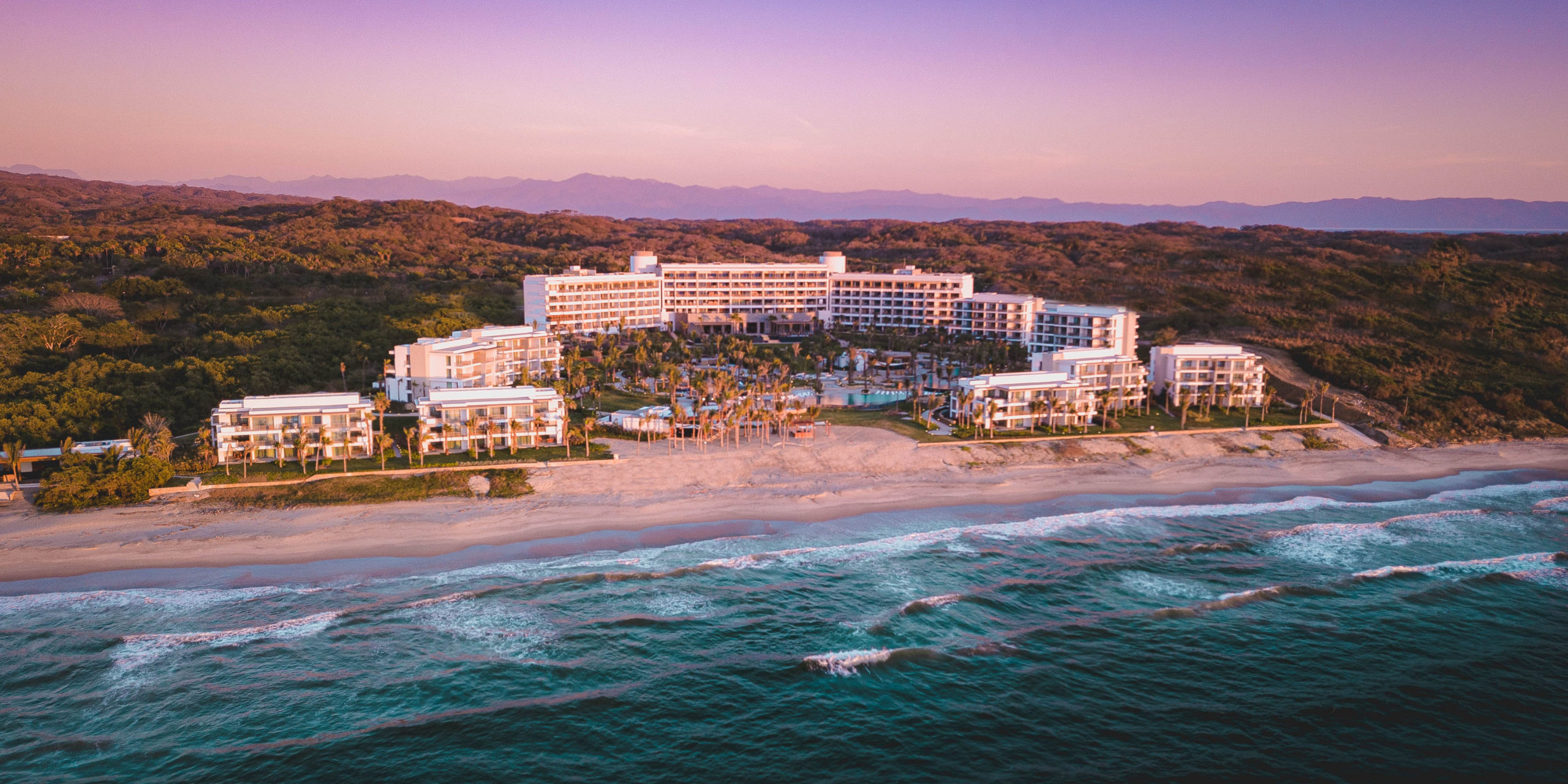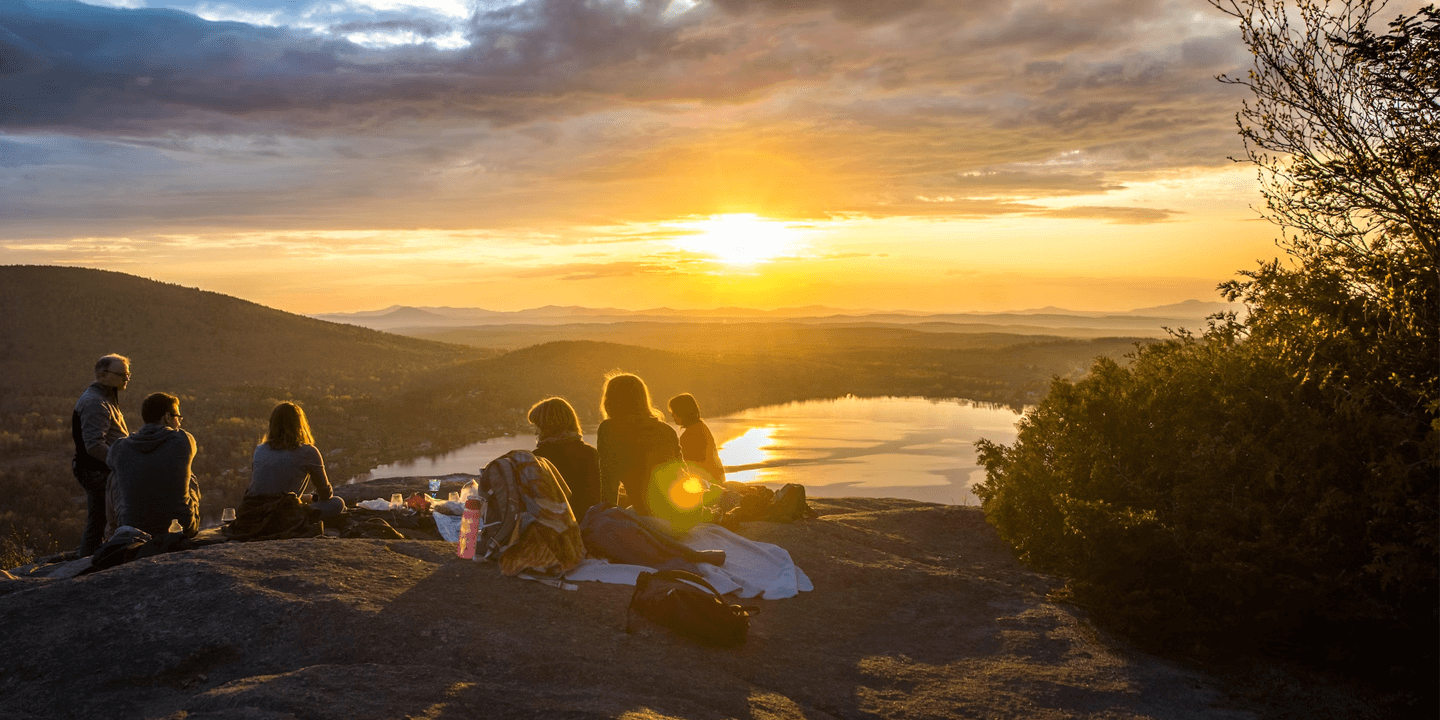Australia is famous for its dangerous wildlife. It's a vast, wild country with unique flora and fauna that evolved in relative isolation for millions of years. But Australia's most dangerous animals aren't just the usual suspects; there are also plenty of surprises along the way.
We want to thank Australian Geographic and the Australian Museum in Sydney for their rankings of dangerous critters, which helped to inform our list. If you want to learn more about the natural wonders of the land down under, check out their websites.
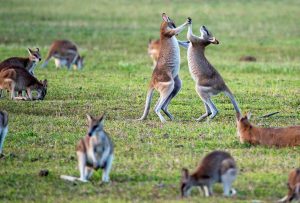 Photo by David Clode on Unsplash
Photo by David Clode on Unsplash
38. Emu
Emu attacks on humans are comparatively rare and usually happen when the animals feel cornered or threatened. However, given there size, emus are bound to be considered among Australia's most dangerous animals. They can reach heights of 6'2 and run as fast as 30 mph (50 km/h).
If you don't think emus are badass enough, consider that the Australian military fought a small war against the birds in 1932. And the emus won.
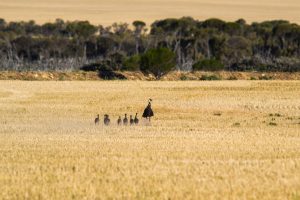 Photo by Germane Jaws on Unsplash "I fought the emus and the emus won." - Old Australian folk song
Photo by Germane Jaws on Unsplash "I fought the emus and the emus won." - Old Australian folk song
37. Dingo
"Maybe a dingo ate your baby." - Elaine Benes
Probably not, but these wild dogs definitely have the physique to threaten humans and fatalities have been known. In general, dingoes avoid interacting with humans when they can. One of the reasons they may approach humans is of other people have taken to feeding them. They may attack because they think you're withholding a treat.
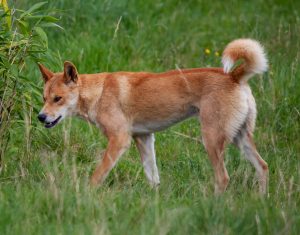 Image by A Fraser Island Dingo
Image by A Fraser Island Dingo
36. Kangaroo
Kangaroos are adorable and fascinating, one of the symbols of Australia. But the males can be as tall as 6'7 and weigh up to 200 lbs. So the full grown ones are not 'little' or 'cute' unless you're an NBA player or something. Even if you are, those powerful legs can pack a definite punch.
That said, kangaroos only really attack humans if they're desperately hungry or thirsty. They're more dangerous if you're driving, since they can be mesmerized by headlights -- and you don't want to crash your car into a full-grown 'roo.
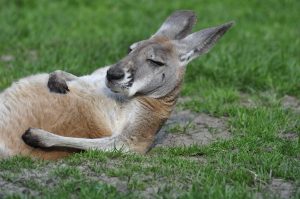 Image by Omg who are we kidding? We can't be scared of you
Image by Omg who are we kidding? We can't be scared of you
35. Cassowary
The list of Australia's most dangerous animals includes multiple birds. Which is odd.
Cassowaries are smaller than emus, but still among the largest birds in the world and often branded the most dangerous. This is somewhat overstated, although the cassowary does have a long middle talon that can inflict massive damage if the bird so chooses.
As with dingoes, the main motivation of cassowary attacks on humans seems to be food. So don't feed the big scary birds!
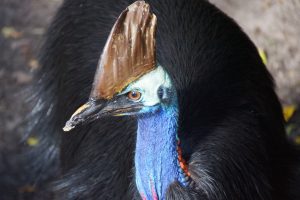 Image by A southern cassowary doing her thing
Image by A southern cassowary doing her thing
34. Australian magpie
Yes, magpies! Magpies are very common in urban and suburban areas throughout Australia. While most are harmless, some are known to 'swoop' in and attack humans, specifically during their breeding season (August through October). The behavior is mainly an attempt to protect chicks from invaders (humans) who may mean them harm.
While not deadly, these attacks are common and can be quite serious. Consequently, the magpie lands on the list of Australia's most dangerous animals.
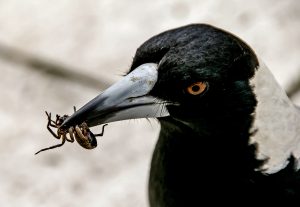 Image by This Australian magpie got himself some lunch
Image by This Australian magpie got himself some lunch
33. Eastern small-eyed snake
The small-eyed snake is endemic to the east of Australia. Reclusive and nocturnal, humans rarely encounter them in the wild. They also tend to wriggle around aggressively when confronted rather than delivering a bite.
However they are venomous, and their toxicity tends to vary by region. Bite symptoms can range from light pain to kidney failure. There is only one human fatality on record.
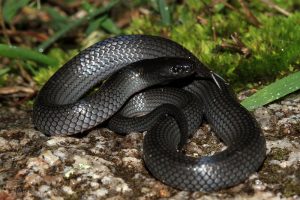 Matt from Melbourne/Wikimedia A small-eyed snake
Matt from Melbourne/Wikimedia A small-eyed snake
32. Beasts of burden
Okay, they're not venomous or especially interesting. But animals like horses, cows, and other mammals are statistically Australia's most dangerous animals. Between 2008 and 2018, 77 people were killed by these creatures. That dwarfs the more 'traditional' scary animals we find down under, and it merits a spot on our list.
31. Stingray
On the one hand, they're often adorable and friendly; on the other hand, Steve Irwin.
Stingrays are aptly named, for the little spears on the end of their tails do indeed sting. The wounds they inflect are certainly painful, but rarely fatal. In fact, Steve Irwin was the first person to die from an attack in Australia for more than 50 years.
But the message is clear: don't provoke the stingrays.
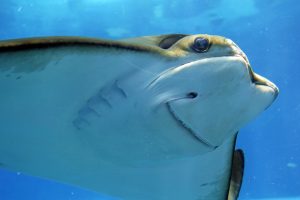 Image by Just look at that grin! You're no killer
Image by Just look at that grin! You're no killer
30. Giant centipede
Giant centipedes are probably more gross than dangerous. They can grow to more than 6 inches in length and are capable of delivering their venom to humans. (They mostly eat insects and arachnids however, so you're definitely not a meal to them.)
The venom is only powerful enough to kill small children, but it can be excruciatingly painful to adults as well, even for weeks after receiving the bite. On the other hand, some people don't find the bites to be more painful than a bee sting.
Whatever the case, you're probably not psyched about meeting these creepy crawlies.
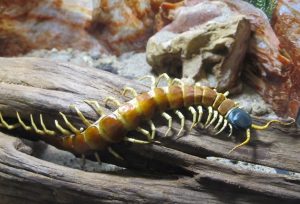 Public Domain Pictures Okay, there's nothing cute about the giant centipede
Public Domain Pictures Okay, there's nothing cute about the giant centipede
29. Bull ant
Yes, ants. These aren't your garden variety, though. Bull ants are tough customers who tend to jump when they're upset and will gladly attack you if you approach their nests. Their stings deliver painful venomous strikes that can trigger anaphylactic shock in people who are allergic. At least 6 people were killed by bull ants between 1980 and 2000. Small, but mighty indeed.
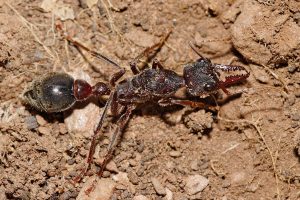 fir0002/Wikimedia A bull ant queen
fir0002/Wikimedia A bull ant queen
28. Australian paralysis tick
It's all there in the name. The paralysis tick is found along the eastern coast of Australia -- which is unfortunately where most of the cities are. Most tick bites in humans don't result in paralysis (that takes several days without noticing you have a tick), but if you're out of doors you still want to be very aware of your surroundings and make sure you check yourself. Paralysis ticks inject you with a neurotoxin that can do damage over time if you don't remove the parasite.
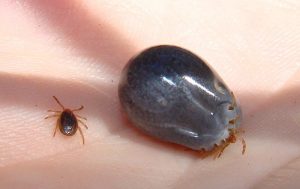 Bjørn Christian Tørrissen/Wikimedia An Australian paralysis tick before and after feeding
Bjørn Christian Tørrissen/Wikimedia An Australian paralysis tick before and after feeding
27. Blue-bellied black snake
Blue-bellied black snakes are native to Queensland and New South Wales. Although shy and retiring by nature, they have been known to bite humans when provoked. The greatest risk (as with many snakes) is accidentally stepping on one.
Although their venom has never killed, it will cause extreme pain, nausea, vomiting, intense sweating, and swelling of the lymph nodes. Medical attention should obviously be sought at once.
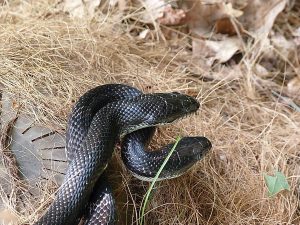 Image by Black snakes
Image by Black snakes
26. Smooth toadfish
The toadfish is a member of the pufferfish family, but it lacks the venomous spines that might make it even more dangerous. The danger with the toadfish is that you might eat it. This is because its body contains buttloads of tetrodotoxins that could be lethal if ingested. So if you're fishing in southeastern Australia, keep your eyes peeled. Toadfish are plentiful there, and they are not food.
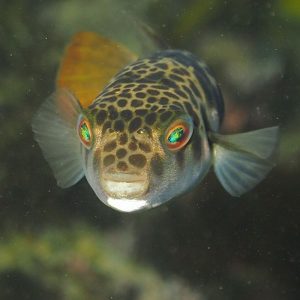 Sylke Rohrlach/Wikimedia A smooth toadfish giving us the stink eye
Sylke Rohrlach/Wikimedia A smooth toadfish giving us the stink eye
25. Reef stonefish
The reef stonefish is not just one of Australia's most dangerous animals; it's most venomous fish known. Worse, it's nearly impossible to spot because its camouflage makes it look like a rock. That's how it catches its prey.
The stonefish's back is lined with 13 deadly spikes. Water shoes won't save you here; those babies have even proven capable of punching through boots. The venom delivered by those spikes is strong enough to kill a human being -- though usually not a healthy adult. But even if you survive, you will experience blinding pain, tissue death, and possibly permanent muscle atrophy.
So, you know... watch your step?
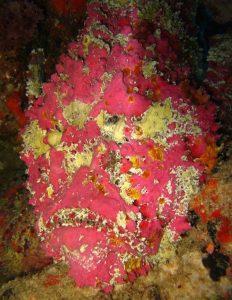 Richard Ling/Flickr A reef stonefish, blending in
Richard Ling/Flickr A reef stonefish, blending in
24. Redback spider
The redback spider looks like the black widow, but they're really just cousins. In fact, the redback is quite a bit more dangerous. Her tendency to spin her web in warm locations, often indoors, makes encounters with humans likely, and her poison is quite capable of harming human beings.
Although death is an unlikely result, anywhere fro 2,000 to 10,000 people in Australia are bitten every year. Hospitalization is sometimes required.
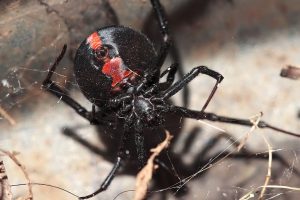 fir0002/Wikimedia A redback spider, not to be confused with a black widow
fir0002/Wikimedia A redback spider, not to be confused with a black widow
23. Inland taipan
The inland taipan is the most venomous snake in the world by a mile. It hunts mammals like you and me to earn its keep, so it is specially designed to kill you. It has enough venom to kill 100 adult humans at any given time, and its bites are rarely 'dry'. These bites can be deadly in under an hour without treatment.
So why doesn't the inland taipan rank higher on the list of Australia's most dangerous animals?
Because it tends to live in dry inland areas where it rarely encounters humans. Also, these taipans are naturally shy and tend to run away from trouble. Lucky for us!
22. Highland copperhead
Highland copperheads aren't nearly as venomous as taipans, though they compensate by delivering more venom by volume. Their bites are more often compared to cobras -- that is to say, bad, but not necessarily a death sentence. That being said, untreated copperhead bites can kill adult humans.
Again, in this case, humans are lucky in that copperheads are not aggressive and are only likely to strike if you provoke them. (Don't do that.)
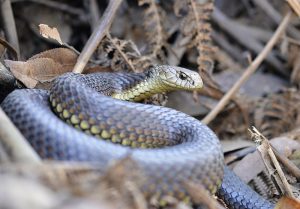 Will Brown/Wikimedia A highland copperhead
Will Brown/Wikimedia A highland copperhead
21. Collett’s snake
Collett's snake is actually a popular pet -- partly because of its attractive and colorful banding. However, it is considerably more dangerous than previously thought. Though not as venomous as other snakes on the list, Collett bites that go untreated can lead to fatal kidney failure within a day.
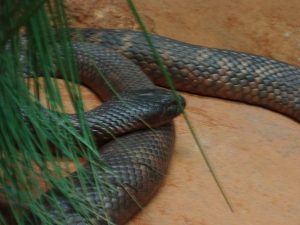 Taipan198/Wikimedia A Collet's snake
Taipan198/Wikimedia A Collet's snake
20. Common lionfish
The common lionfish sure is pretty -- but don't touch. Those spines on your boy's fins are extremely venomous. Venomous enough to kill you, in fact. Fortunately, lionfish don't attack divers. Most people who end up getting stung have already killed or severely injured the fish in question.
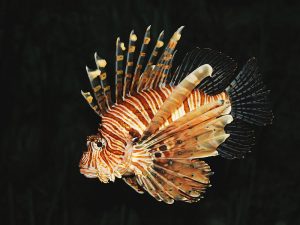 Michael Gäbler/Wikimedia The common lionfish: beautiful but deadly
Michael Gäbler/Wikimedia The common lionfish: beautiful but deadly
19. Bluebottle
Bluebottles might easily be mistaken for jellyfish. Like jellyfish they float through the ocean, stinging and eating stuff. And like jellyfish, they often wash up on beaches. However, bluebottles are actually colonies of cooperating life forms rather than true jellyfish.
Also, while their stings can be unpleasant or even life-threatening for the young, old, and sick, bluebottles are far less dangerous than some other species we will meet further down the list.
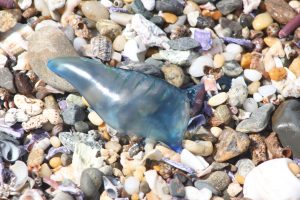 Image by A bluebottle jellyfish
Image by A bluebottle jellyfish
18. Yellow-bellied sea snake
Yellow-bellied sea snakes live in the shallow waters that surround north and western Australia. Like other sea snakes, their venom is extremely potent. In fact, they have the 5th deadliest venom of any snake on earth. As such, they would likely rank higher on their list if they lived on the land, where most people spend most of their time.
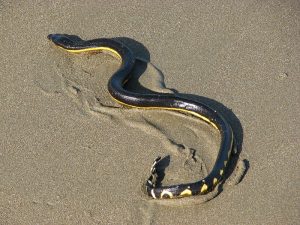 Aloaiza/Wikimedia Yellow bellied, but no coward
Aloaiza/Wikimedia Yellow bellied, but no coward
17. Tiger shark
Tiger sharks are known for eating all kinds of stuff -- including garbage that finds its way into the ocean. So it's not a mystery that they're responsible for the second most human attacks among shark species. (More on #1 later!) Another reason is that tiger sharks like to wander into shallow waters where humans are likely to be enjoying a day at the beach.
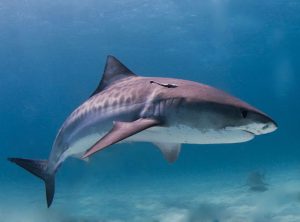 Albert kok/Wikimedia Theyyyyyyy're great!
Albert kok/Wikimedia Theyyyyyyy're great!
16. Mulga snake
Yes, we're definitely coming to the snake portion of our list.
Reaching lengths of up to 11 feet, the mulga (or king brown snake) is a big one, and its range covers most of Australia. Although not as venomous as many other snakes in Australia, it still accounts for about 4% of bites recorded in the country. The effects are rarely life-threatening, but can result in paralysis if treatment is not sought.
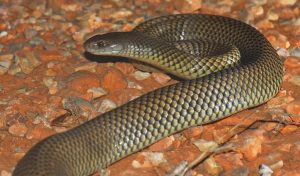 Smacdonald/Wikimedia Mulga snake
Smacdonald/Wikimedia Mulga snake
15. Great white shark
This one needs no introduction... but we'll provide one. Great whites can reach lengths of 20 feet, weigh more than 4,000 pounds, and swim as fast as 35 mph. They're carnivorous underwater hunting machines.
Indeed, great whites are responsible for more shark attacks on humans than other species, but it's important to point out that they're not hunting you. They often perform 'test bites' on humans, whom they may mistake for prey. These bites are devastating, but often non-lethal, and the shark with typically withdraw once it realizes you're not food.
Still, it would be ludicrous not to rank the great white as one of Australia's most dangerous animals.
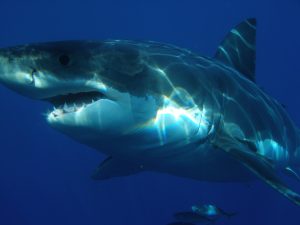 Image by If you'd like, I could recommend a good dentist
Image by If you'd like, I could recommend a good dentist
14. Red-bellied black snake
Red-bellied black snakes are dangerous because your odds of encountering them are higher than some more venomous snakes. The reason is that red-bellies like to hang out in swamps and woodlands near urban or suburban areas, so their territory can overlap with yours.
Their bites are, of course, extremely painful and require medical attention. Of particular note is that they sometimes result in the need to amputate the limb that was bitten because the venom is necrotizing.
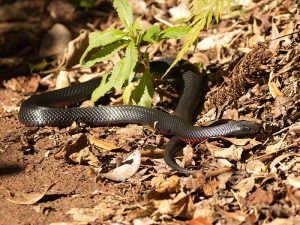 Donald Hobern/Wikimedia The red belly is the giveaway
Donald Hobern/Wikimedia The red belly is the giveaway
13. Tiger snake
Tiger snakes are native to southern Australia and Tasmania. They're not as docile and shy as some other species. As a result, tiger snake bites are comparatively common, accounting for 17% of attacks between 2005 and 2015.
Their venom is also deadly serious, potentially causing paralysis and death within hours if treatment is not administered. It's estimated that as much as 60% of tiger snake bites are lethal without medical intervention.
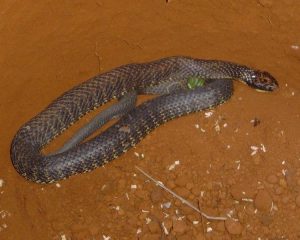 JAW/Wikimedia Almost as dangerous as an actual tiger
JAW/Wikimedia Almost as dangerous as an actual tiger
12. Dugite
The dugite is a venomous snake native to the southwestern coast of Australia. It has some of the deadliest venom in the world. One woman died from a bite even though paramedics arrived within five minutes of being summoned.
The dugite is not an aggressive snake by nature and will usually take any opportunity to avoid biting a human. However, they may be more excitable in October and November, since this is their mating season.
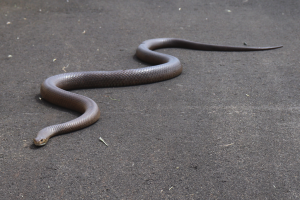 Bradford G. Jones/Wikimedia G'day, dugite
Bradford G. Jones/Wikimedia G'day, dugite
11. Cone snails
We all love to sell sea shells by the sea shore. But you should think twice about picking up those brightly colored cones. Some of them contain venomous cone snails that are among Australia's most dangerous animals. All told, it's safer to buy a shell in a souvenir shop than it is to grab one off the beach.
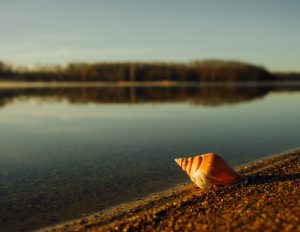 Image by Better to buy one in the gift shop
Image by Better to buy one in the gift shop
10. Common death adder
The common death adder -- as the name implies -- is one of the deadliest snakes in the world. It is native to eastern and southwestern Australia. The death adder has the strongest fang of any snake in the country, and its knack for camouflage makes it doubly dangerous. It also delivers the fastest strikes of any snake on the list.
The death adder's venom is a potent neurotoxin that will cause paralysis and death within 6 hours.
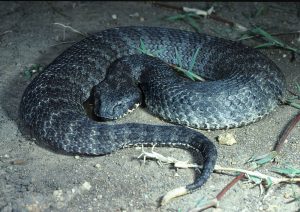 CSIRO/Wikimedia I am become death adder
CSIRO/Wikimedia I am become death adder
9. Coastal taipan
The coastal taipan is the third most venomous snake in the world. His cousin, the inland taipan is #1. (By the way, #2 lives in Australia too, but we haven't met him yet.)
Unlike the inland taipan, the coastal cousins are found in more populous areas around the north and eastern coast. They're also somewhat less shy, although they are still unlikely to attack unless they feel cornered or threatened.
A coastal taipan bite will kill an adult human in as little as half an hour. Without treatment, the mortality rate is 100%.
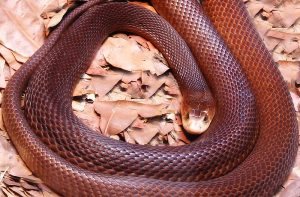 AllenMcC./Wikimedia The bronze medal winner in venom
AllenMcC./Wikimedia The bronze medal winner in venom
8. Blue-ringed octopus
Small in size (5-8 inches end to end) and docile in nature, the blue-ringed octopus is nevertheless one of the most venomous creatures on earth, and richly deserves to be ranked among Australia's most dangerous animals.
Their bodies contain enough tetrodotoxin to kill 25 adult humans. Their blue rings generally only appear when they feel threatened and serve as a warning.
While only very foolish people who frighten and then touch the octopus are likely to be bitten, their bite is often painless. That means you may not even know you're in danger until it suddenly becomes impossible to breathe.
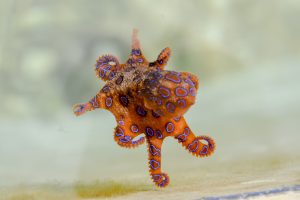 Image by They look cute, but you mustn't touch
Image by They look cute, but you mustn't touch
7. Sydney funnel web spider
The Sydney funnel web spider is so named because it only lives in a 60 mile radius around the city. Thank goodness it doesn't wander farther afield, because this is one of the very few spiders in the world capable of killing humans. Children are especially at risk, but severe symptoms can appear in less than an hour without treatment.
They can be found in gardens -- under logs, in sheds -- as they favor warm, moist living environments.
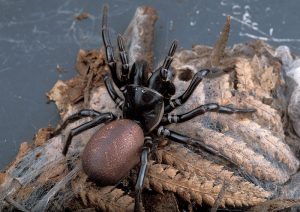 CSIRO/Wikimedia The stuff of nightmares
CSIRO/Wikimedia The stuff of nightmares
6. Saltwater crocodile
Unlike other crocs, these are capable of traveling thousands of miles via ocean current since they reside in salt water. Males can grow to be 20 feet in length and weigh more than 2,000 pounds. For this reason, they're often reckoned to be the largest extant species of crocodiles. They also have the strongest bite of any animal on earth.
Saltwater crocs often assume humans who enter their territory are prey. They will happily attack and eat you, so areas where they're known to lounge about are definitely best avoided. Between 1971 and 2013, saltwater crocs killed at least 106 people. Those are just reported deaths; the real number is undoubtedly higher.
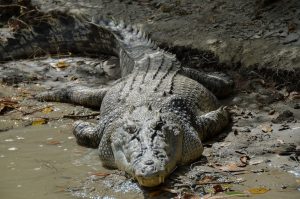 Image by Lazy but crazy strong
Image by Lazy but crazy strong
5. Eastern brown snake
The eastern brown snake is the second most venomous snake on earth, native to central and eastern Australia. It tends to live in farmland or on the edges of human settlements. Anywhere there are rodents, really. These two facts combined mean that brown snakes are responsible for more bites and more deaths than any other snake in Australia.
Just as terrifying, they're incredibly quick and can outrun an adult human.
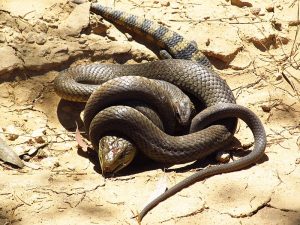 Matt from Melbourne/Wikimedia An eastern brown snake getting some lunch
Matt from Melbourne/Wikimedia An eastern brown snake getting some lunch
4. Bull shark
This is a truly ill-tempered shark. Bull sharks live in shallow waters and they do not like to be disturbed. If they feel you're challenging them or infringing on their territory... there's a good chance they will attack. For this reason, they attack humans a lot. They're probably more dangerous than great whites. In fact, the real events that inspired Jaws actually involved a particularly nasty bull shark.
3. Irukandji
How do you protect yourself from a potentially deadly jellyfish with a body that's only 1 cm3? You don't.
Despite the small size of its bell, the irukandji trails tentacles behind it that may be as long as 50 cm. Its stingers are extremely painful and result in up to 100 hospitalizations a year in Australia. The shock can be so severe that it causes death, though this is rare.
Writer Robert Drew describes the sting as "100 times as potent as that of a cobra and 1,000 times as strong as a tarantula."
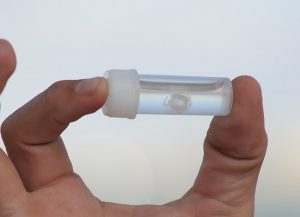 GondwanaGirl 04:29/Wikimedia Irukandji in a vial, the safest place for it
GondwanaGirl 04:29/Wikimedia Irukandji in a vial, the safest place for it
2. Bees and wasps
Yes, bees. It's a little odd, I know, but even given all the venomous creatures Australia has to offer, including the three most fearsome snakes in the world, bees still do the most damage.
Between 2000 and 2013, 12,351 people had to go to the hospital because of bee or wasp stings. Twenty-seven of those people died. So while they may not be unique to Australia, especially large, or especially venomous, bees and wasps definitely deserve to be ranked among Australia's most dangerous animals.
1. Box jellyfish
We're speaking specifically about the species chironex fleckeri, which is generally considered to be the most dangerous jellyfish in the world.
The box jellyfish trails up to 10 feet of tentacles behind it, each one packed with stingers capable of delivering a lethal dose to a human. The average fleckeri carries enough poison to kill 60 adults. If the wounds inflicted are severe enough, victims may die within 5 minutes.
These jellyfish are common in the waters of northern Australia, and you will see warning signs posted near beaches where jellies are known to appear. You may also see bottles of vinegar, which is commonly used to treat stings -- assuming the person lives long enough to make it back to their friends.


